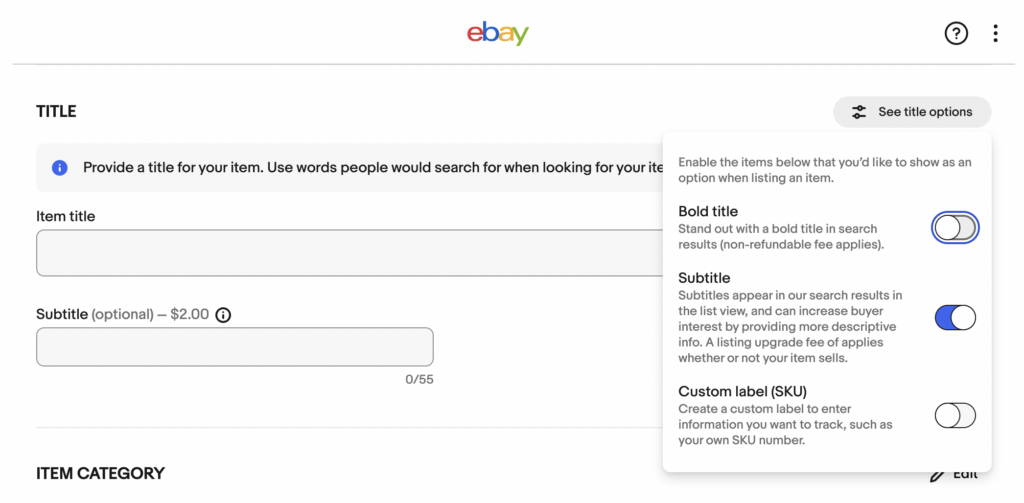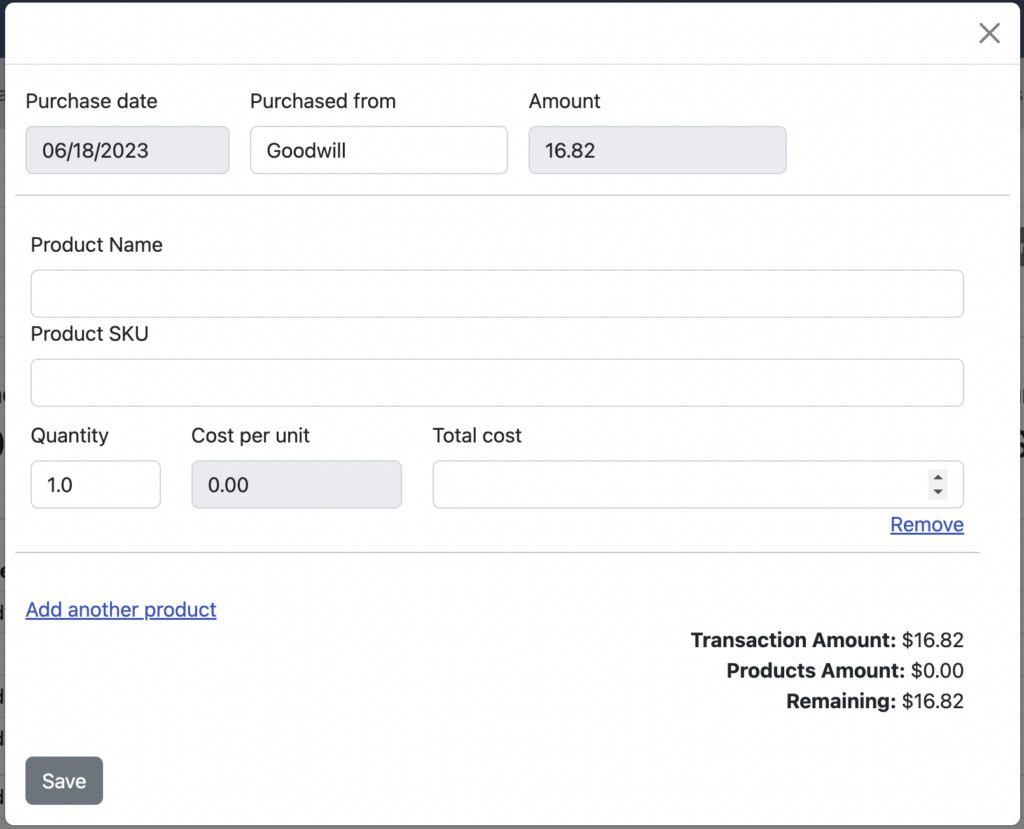Tracking cost of goods sold with eBay
eBay cost of goods sold tracking has been a challenge for years (as we have heard from both customers and members of the eBay management team.)
Not too long ago, Seller Ledger rolled out inventory tracking, complete with some nifty automated cost of goods sold calculations. But for eBay sellers, that functionality depends on the use of an optional listing field called “Custom label (SKU).” And it turns out, that field is not shown by default when creating listing templates. So, we thought we’d help folks learn how to find and use that field, and what magic it can potentially unlock.
When you start to create a listing, one of the first things you’ll do is create a title for your item. By default, you will see two fields: Item title and Subtitle. However, if you click on the link to the upper right, called “See title options“, you will see a few more options pop up. One of those options is “Custom label (SKU)”.

Click on the selector to turn that field on, and you should see an updated form that looks like this:

Now, you have the ability to enter information about this item in the Custom label (SKU) field. But what should you put there, and why is it important?
You can choose to put anything you’d like in there, but, if you follow this guidance in conjunction with Seller Ledger, you will see two major benefits:
- Have your inventory reduced and your cost of goods sold automatically calculated when an item sells
- See how much money you make on each sale
The key concept here is to have a unique identifier (SKU) for each item you sell on eBay. How you create that identifier is up to you. Some people put a combination of letters and numbers, with some parts relating to the product name, or the bin number in which they are are currently stored. Others simply choose ever-increasing numbers. What matters most is that each SKU value is unique to that eBay item.
In Seller Ledger, when you purchase items for resale, you now have the ability to create a product/item, complete with a Product SKU field.

If you enter the same value in your eBay listing under “Custom label (SKU)” that you enter in Selller Ledger under “Product SKU”, you can sit back and watch the magic happen. When one of those items sells on eBay, Seller Ledger will match the order to your inventory, reduce the number of “in stock” units in inventory, and automatically calculate the cost of goods sold for that item, and show you the gross profit for that sale, as seen below.

Feel free to dig in for a more in-depth look at how Seller Ledger helps automate inventory and cost of goods tracking.
Interested in giving this a try? Seller Ledger offers a 30-day free trial, no credit card required.
Reader interactions
4 Replies to “Tracking cost of goods sold with eBay”
Leave a Reply
You must be logged in to post a comment.

This is fine but I have over 9000 listings.
I do use custom SKU through Inkfrog but I do not stock but very little parts.
I order as sold or dropship from my 2 suppliers.
I have entered my cost of goods sold in Seller Ledger but it is not coming up as cost of goods sold.
I do not know how or if I can make this work.
I have used Godaddy Bookkeeping before it was Godaddy
Thanks
Lee Stevensom
Mower Parts 4 less
Hi Lee, thanks for commenting. We’re looking into the ability to import active listings from eBay as well, to help pre-populate inventory. However, for people who don’t want to track at the item level (which is what the Custom label (SKU) field enables,) there’s always the option to track at a balance level. We wrote a support article about just that: https://support.sellerledger.com/article/43-what-is-balance-level-inventory-tracking
I can see cost of goods entries in your account, but would rather not discuss private data in a public forum. If you want to email me at [email protected], I’d be happy to help you with what you’re trying to do.
Thanks for sharing your feedback with us!
Why aren’t you taking PayPal as a form of payment?
It’s not that we don’t want to accept PayPal, we just picked a solution based on ease of implementation. We use Stripe to do our subscription billing – they’re much easier to work with. Any credit or debit card should work.